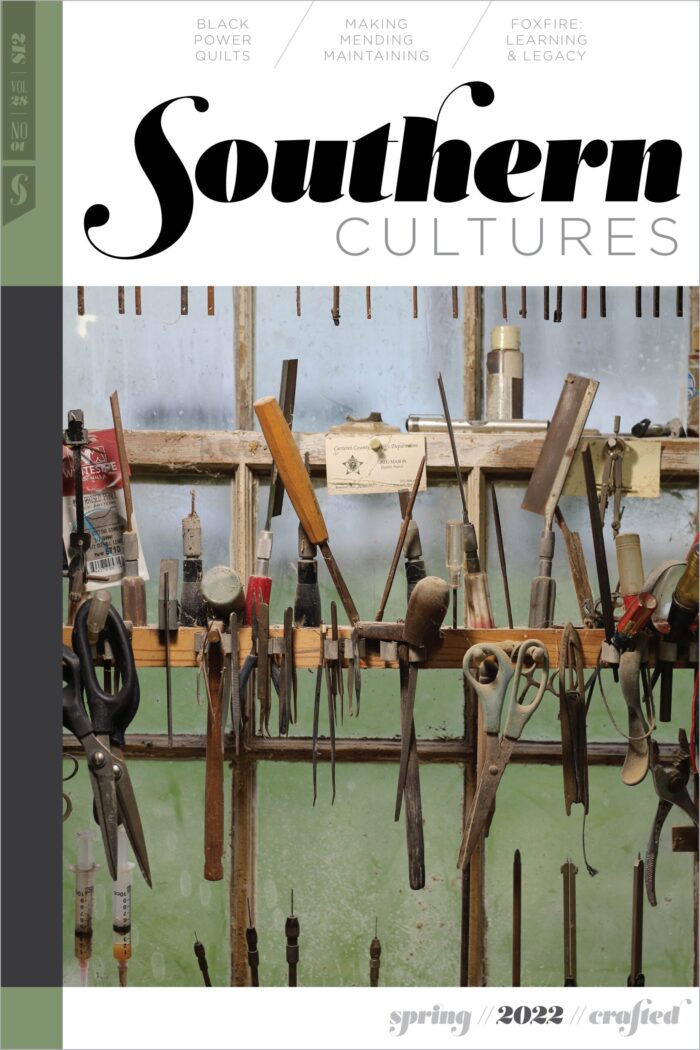I recently visited Dublin, Ireland, and there were several restaurants serving Central Texas–style barbecue. Whether or not they were doing it well is another matter, but the point is that people around the world can’t seem to get enough of the cuisine. Barbecue is an ancient and now global method of food preparation whose history has been deeply shaped by place, people, and economies of labor—particularly in the American South. And it’s this style of southern barbecue that is particularly hot right now. American barbecue competitions and restaurants are proliferating in the United States and worldwide. Its cooks and writers are famous. But what’s making barbecue so trendy?
The seeds for barbecue’s current fever pitch were planted in the 1990s when food media types started reframing barbecuing as a craft. Before that time, barbecue was certainly appreciated, but it held on to its working-class roots. With the media reframing, barbecue suddenly became something “cool.” Young white men, who might have likely pursued other creative or white-collar professional careers, plunged into the world of barbecue as a vocation or as a side hustle. We’ve lived with the blatant and subtle consequences of that shift ever since. One unfortunate consequence is that the barbecue boom and boon has been good to white people, especially white men, but not so much to the African American chefs long considered the cuisine’s “go-to” cooks.
Language played an important role in barbecue’s redefinition. We’ve seen barbecue cooks called many things, and “pitmaster” is the favored title these days. Texas Monthly barbecue editor Daniel Vaughn’s deft examination of what we should call the barbecue greats found that the term gained currency in the late 1970s and the 1980s. In its most favorable light, the word pitmaster implies expertise, craftsmanship, and mastery. Unfortunately, the term has become so overused that it no longer holds special meaning. As food writer R. L. Reeves aptly noted in Vaughn’s article, “If you can butt a Bic lighter up against a Kingsford briquette these days, you’ve earned the sobriquet ‘pitmaster.’” Still, the wide application of the term facilitated the reframing of barbecuing as a craft, which begs the question: what do we mean by “craft,” and should it apply to making barbecue?1
In 1990, Janet Kardon, director of the American Craft Museum, defined craft as objects “created by trained professionals or individuals who are carrying on traditions transmitted from their elders. The artist is aware of the historical continuum of craft, either within the ethnic or national community or from the larger mainstream, and [the artist] is often committed to extending and expanding that continuum in inventive ways.” Though Kardon wrote in terms better suited for a material object, the definition works well for food and how some barbecue cooks are currently perceived.2
If craft represents the professionalized production of material, then the work of supposedly “untrained” people falls into a catchall category called “folk art.” Folk artists aren’t valued by mainstream society to the same extent as craftspeople. Folk artists tend to remain anonymous to, and underappreciated by, the larger public.
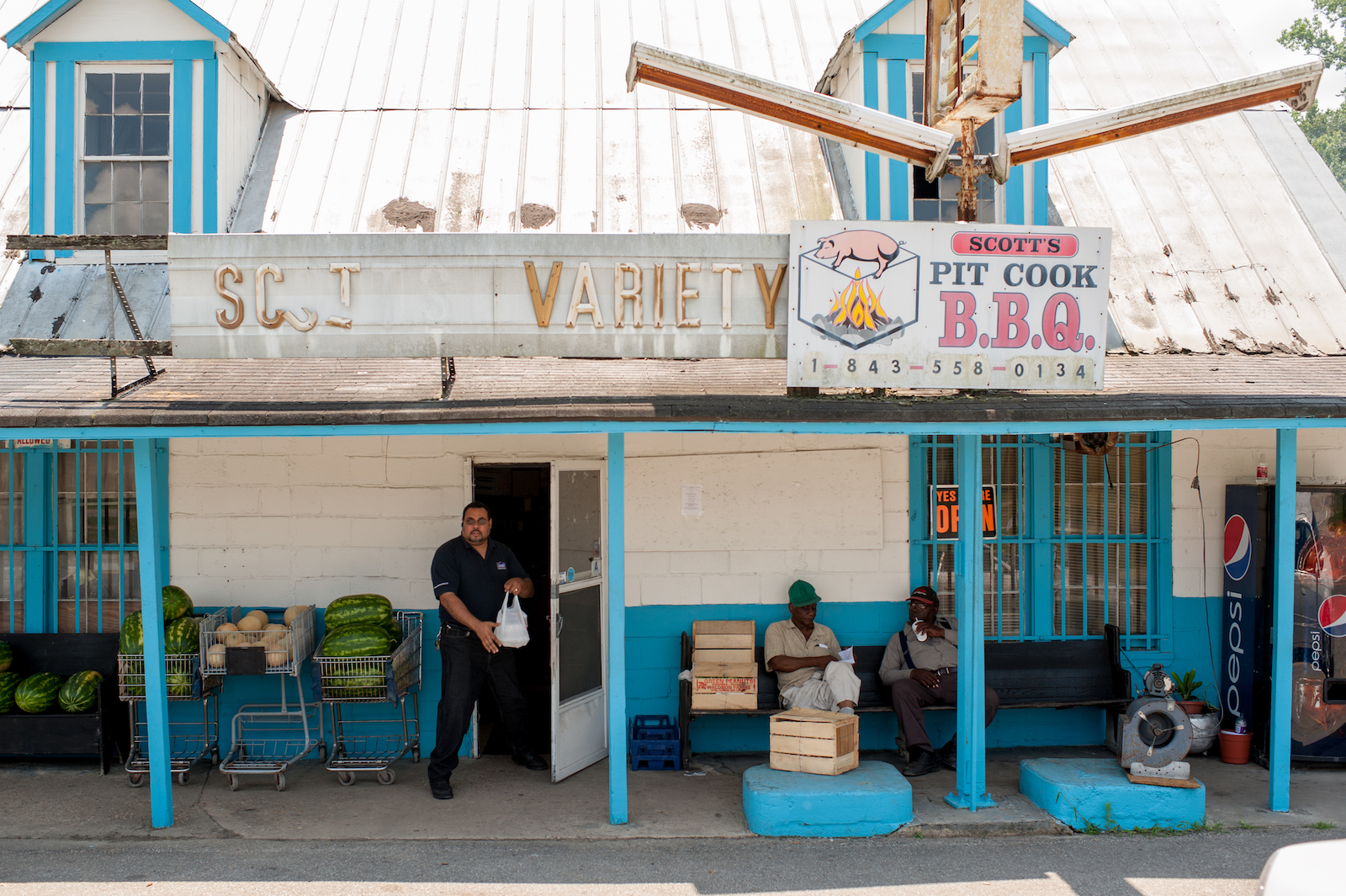
All photographs from Southern Foodways Alliance, by Denny Culbert unless otherwise noted.
When African American cooks dominated barbecue until the late twentieth century, it was highly appreciated if menial work. Barbecuing had the trappings of craft, but these cooks clearly fell into a raced category of skilled workers. Barbecue-as-craft, however, opened up a new space that white people could enter and dominate. Though writing about barbers, butchers, and bartenders, Richard E. Ocejo, a leading scholar on contemporary craft culture, adeptly describes the convergence of several factors that allowed this aspect of barbecue craft culture to explode. In an online interview, Ocejo opines on this new generation of craftspeople:
Primarily, they pursue the elite versions of these jobs because they allow them to use their heads, hands, and social skills. Like much knowledge-based work, these jobs require workers to use cultural information to be creative. Unlike it, however, they get to do so by using their bodies to perform craft-based tasks and provide tangible products and services. Finally, they also get to share this knowledge with consumers. Thus, these attributes give these jobs greater status than they normally have. They become knowledge workers who get to learn a craft and directly serve the public.
Using Ocejo’s conceptual framework, making barbecue became cool because it combined a preference for work that relies on intellectual capability as much as one’s hands.3
More prestigious than mere skilled labor, craft barbecuing has generated notoriety and prosperity for a cadre of savvy barbecuers, which has brought its own scrutiny in turn. Cultural critic Lauren Michele Jackson gave a penetrating critique of the emerging, reframed “white craft culture,” and applied it to barbecue thusly: “Even though its roots in pit-style cooking on plantations are well known, its transmutation from a staple to a product of true craft is a feat largely attributed to the exceptional taste and unique skill of the white pitmasters who have claimed it as their own.” Jackson goes on to explain that African American cooks are effectively shut out of the mainstream attention and prosperity that comes with barbecue.4
A craft culture focused on artisans, rather than the food itself, created the necessary hook for food media. “The national press would have you believe barbecue is dominated by white hipster males,” food writer Robb Walsh has noted, pointing to coverage that leaves out or diminishes the work and visibility of Black pitmasters. Given the sheer numbers of people who make barbecue, it’s puzzling and disheartening that the same white guys are featured over and over again, while women and African Americans are consistently overlooked.
The incessant press coverage has revealed some “White Dudes Who Barbecue” archetypes. First, there’s the “Bubba” who represents working-class white people, especially those from rural areas. Next is the barbecue competition guy. Then there’s the “urban hipster”—the dudes with interesting facial hair, fashionable glasses, piercings and/or tattoos, and, possibly (though unlikely), a pair of skinny jeans. Last, there are the “Toques Who Smoke,” the fine dining chefs who enjoyed barbecue but didn’t originally deem it suitable for their restaurants.
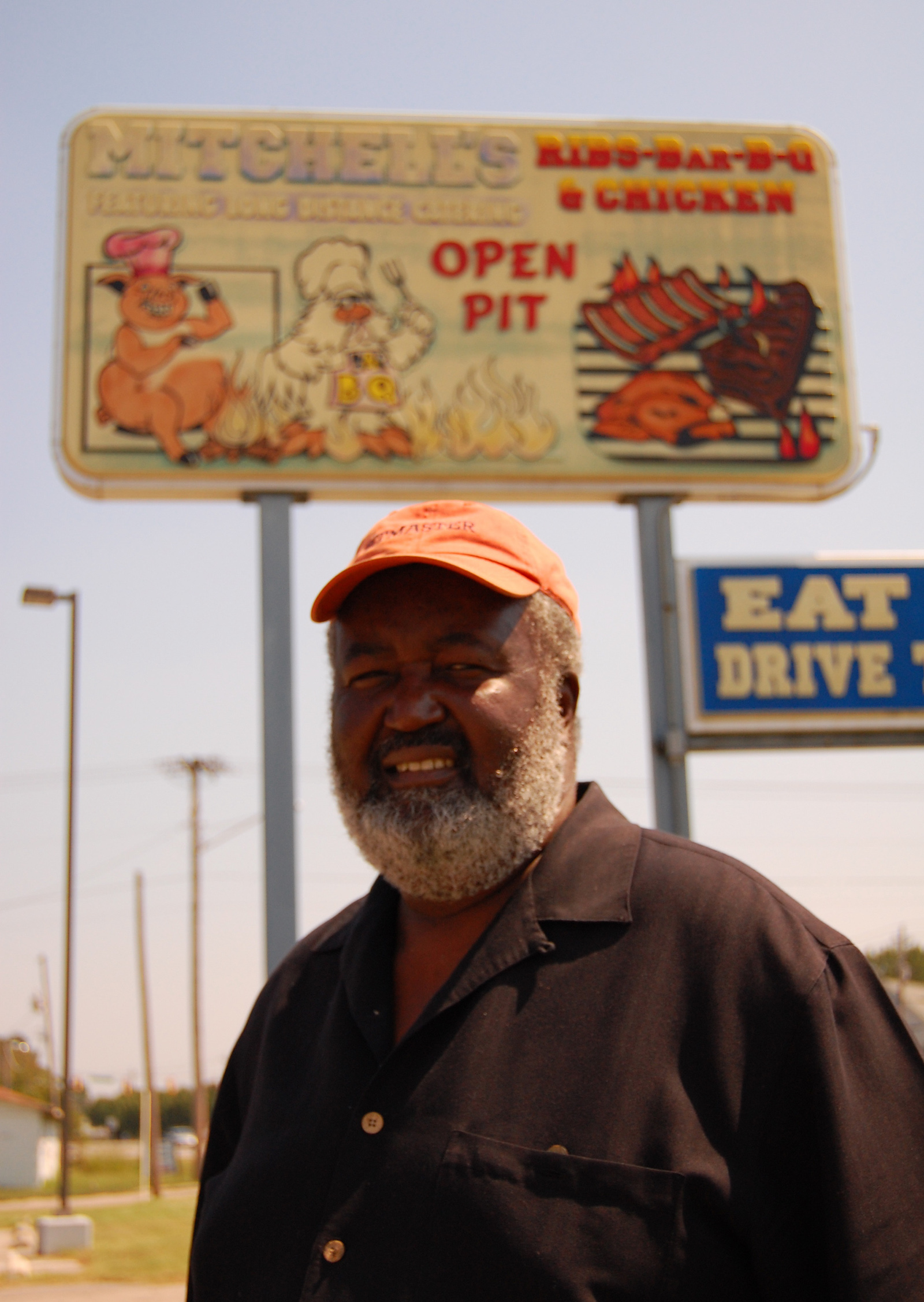
The craft-oriented redefinition of barbecue is notable because it commands higher pay and profits. Opportunities are seemingly endless: menus with higher price points, restaurant franchises, book deals, television shows, professional speaking circuits, and branded accessories (sauces, aprons, grills, etc.). A great example of such success is barbecue expert Steven Raichlen, who has multiple cookbooks, television shows, an accessory line, and a series of grilling workshops around the country. With the exception of former heavyweight boxing champ George Foreman and his grilling machines (I’m definitely not calling that authentic barbecue equipment), no African American chef or entrepreneur has had marked success capitalizing in this space. White barbecuers are now making sums of money that were once unimaginable for a barbecue professional. In 2021, the world’s largest barbecue contest, Memphis in May, awarded $142,350 in prize money. Unfortunately, few African American chefs compete at these events, and the ones who do rarely make it into the winner’s circle.5
The decline of African American influence in barbecue was palpable even in academic circles far from the US South. At a 1994 gathering of food scholars and enthusiasts in Oxford, England, writer Josephine Bacon presented a paper titled “The Great American Art of Pit Barbecue is Fast Disappearing.” Bacon’s paper relied on newspaper clippings lamenting the dying or dead barbecue scenes in Baltimore, Maryland, and Memphis, Tennessee. Eight of the twelve barbecue joints mentioned had Black pitmasters. Implicitly invoking the language of craft, Bacon observed the skill and artistry in pit barbecuing (and its “slow and delicate” process in contrast to fast-food culture), concluding that it might just survive with the support of its practitioners and fans “though not quite in the robust, traditional manner of old, thanks to new-fangled fads and bureaucracy such as food hygiene regulations. Let us pray that automation and electronics never rear their ugly heads in barbecue, or we shall have to resort to ‘virtual pit’ to experience what pit barbecue used to taste like!”6
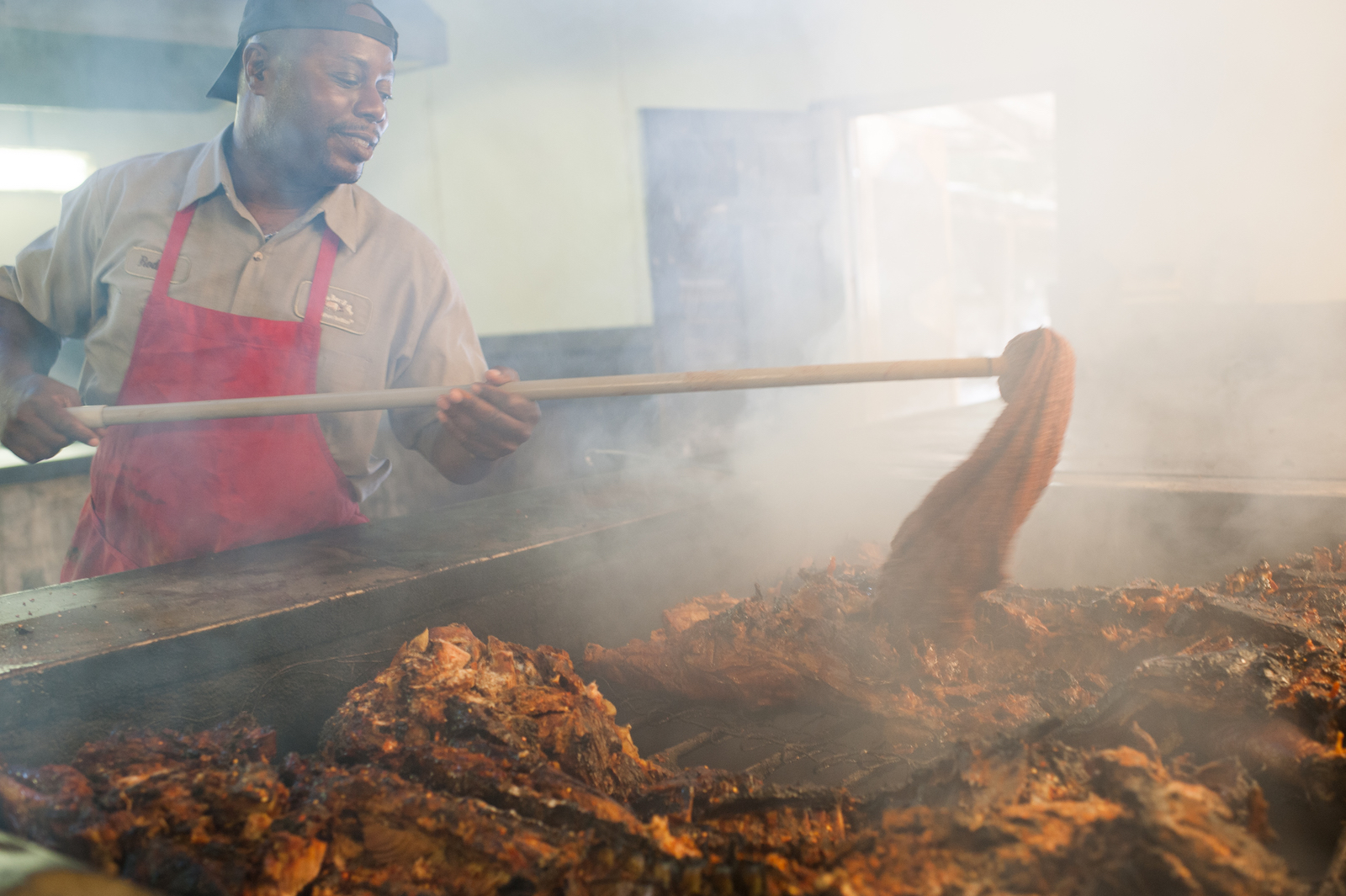
It didn’t quite work out the way that Bacon predicted. The twenty-first century’s first decade saw an intensifying interest in barbecue, in part because southern food was also trending. Barbecue is so closely associated with that cuisine that Charles Kovacik, an expert on South Carolina barbecue restaurants, noted: “The eating place with the strongest southern identity is the barbecue restaurant.”7
Previously, for much of the nineteenth century, barbecue was something that few white people did as a profession. That dramatically changed by the end of the century when barbecue shifted from being whole animal cooking to a focus on smaller cuts of meat. I wondered why, and a conversation with legendary North Carolina pitmaster Ed Mitchell gave me some insight. He explained that many people simply lack the skills to properly do whole animal barbecuing, but they saw how much money these Black barbecuers were making. If you can’t cook the whole animals yourself, or you can’t hire a Black person to do it for you, what do you do? You make it easier to cook by breaking it down into more manageable parts. If that became an acceptable form of barbecue, more people could enter the field. That’s exactly what happened at the turn of the twentieth century. Numerous barbecue restaurants opened from 1900 to the 1930s, though few showed any longevity.
What Mitchell said made sense intuitively, but I wondered what historical evidence supported his theory. As for the cooking expertise required for whole animal cooking, Sam Jones, another whole hog barbecue legend, and a white dude, agrees with Mitchell. “In Eastern North Carolina, more so than anywhere else in the country, the definition of barbecue has historically been pretty simple: a whole animal cooked over wood, or coals … It was done that way out of expediency when the slaughter was part of the barbecue event, and meat didn’t arrive in a refrigerated truck … I personally don’t believe you can re-create what happens when you cook a whole animal when you start with an individual cut.”8
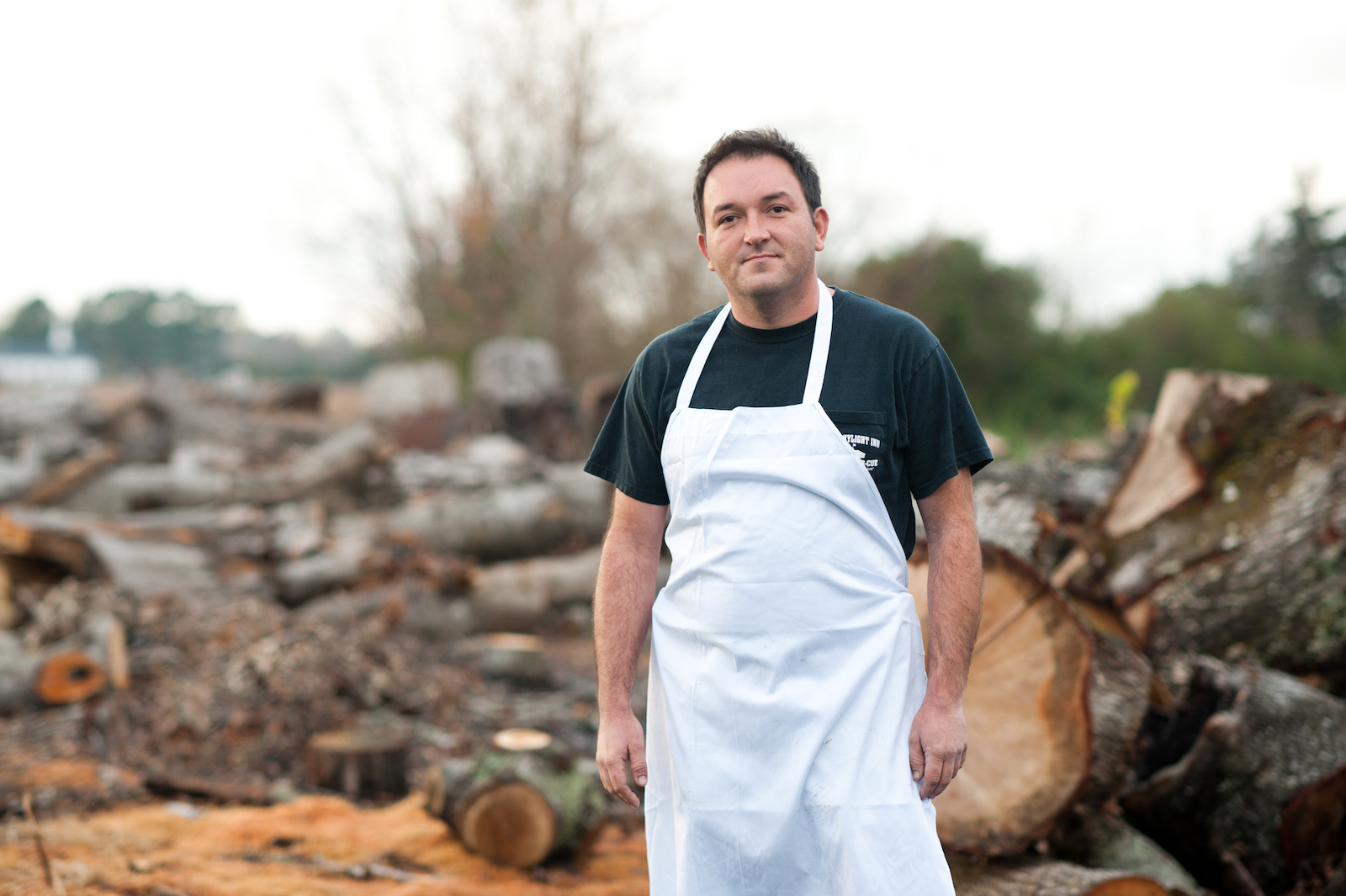
Before you brush off their comments as coming from North Carolina partisans, note that the emerging barbecue scenes at the turn of the twentieth century featured smaller cuts of meat. As barbecue historians John Shelton Reed and Dale Volberg Reed wrote, “The first barbecue stands in Lexington and Salisbury [North Carolina] were just cooking parts of the hog-loins, hams, and especially shoulders” by people who shared a common German ancestry. Texas folklorist Frank X. Tolbert wrote similarly of the early barbecue proprietors in Central Texas. “In fact, in these towns where there are many folk of German, Polish, or Czech ancestry, the best places to eat are often in the smoky back rooms of meat markets … part of the back room will likely be taken up by a small sausage factory. There will always be a big brick barbecue pit over which beef, mutton, goat meat, and sausages will cook for hours, very slowly, from smoke as much as heat radiation.” By the 1920s, a mix of Native, Black, white, and immigrant cooks would create their own traditions based on smaller cuts of meat in places like Kansas City, Missouri, and Memphis, Tennessee.9
What is the state of craft barbecue today? It’s a mixed picture. After decades of neglect, food media is doing a better job of recognizing the diverse world of barbecue. African American barbecuers are receiving deserved press coverage, which brings greater fame, cookbook deals, and inclusion in barbecue halls of fame around the country. Notably, television shows focused on barbecue are now much more representative. Rodney Scott, an African American barbecue chef based in Charleston, South Carolina, personifies such progress. In the past few years, Scott won a James Beard Award, was inducted in the American Royal Barbecue Hall of Fame, opened several restaurants, and published a successful cookbook.
Barbecue is unlikely to lose its luster as a craft, but at least now there’s more intention about its history, practitioners, and rewards. Yes, there’s room at the craft cookout for everyone.
This essay first appeared in the Crafted Issue (vol. 28, no. 1: Spring 2022).
Adrian Miller is the James Beard Award–winning author of Soul Food: The Surprising Story of an American Cuisine, One Plate at a Time; The President’s Kitchen Cabinet: The Story of the African Americans Who Have Fed Our First Families, from the Washingtons to the Obamas; and Black Smoke: African Americans and the United States of Barbecue.
Header image: Barbecue tray at Scott’s Bar-B-Que, Hemingway, South Carolina, June 20–21, 2012.NOTES
1. Material for this article was adapted from Adrian Miller’s latest book, Black Smoke: African Americans and the United States of Barbecue (Chapel Hill: University of North Carolina Press, 2021). Daniel Vaughn, “What Should We Call the Barbecue Greats?,” Texas Monthly, August 2018, https://www.texasmonthly.com/bbq/call-barbecue-greats/.
2. Janet Kardon, “Within Our Shores: Diverse Craft Revivals and Survivals,” in Revivals! Diverse Traditions, 1920–1945: The History of Twentieth-Century American Craft, ed. Janet Kardon (New York: Harry N. Abrams, 1994), 23.
3. Richard E. Ocejo, “Richard E Ocejo: On His Book Masters of Craft: Old Jobs in the New Urban Economy,” Rorotoko, July 18, 2017, http://rorotoko.com/interview/20170719_ocejo_richard_on_book_masters_craft_old_jobs_new_urban_economy/.
4. Lauren Michele Jackson, “The White Lies of Craft Culture,” Eater, August 17, 2017, https://www.eater.com/2017/8/17/16146164/the-whiteness-of-artisanal-food-craft-culture.
5. Todd A. Price, “What Does It Take to Win Big on the Barbecue Circuit?,” Columbus Dispatch, June 30, 2021, https://www.commercialappeal.com/story/entertainment/2021/06/30/competitionbarbecue-south-what-it-takes-to-be-a-winner/5335365001/.
6. Josephine Bacon, “The Great American Art of Pit Barbecue Is Fast Disappearing,” in Disappearing Foods: Studies in Food and Dishes at Risk, Proceedings of the Oxford Symposium on Food and Cookery 1994, ed. Harlan Walker (Devon: Prospect Books, 1995).
7. Charles Kovacik, “Eating Out in South Carolina’s Cities: The Last Fifty Years,” North American Culture (1988): 53–64.
8. Sam Jones and Daniel Vaughn, Whole Hog BBQ: The Gospel of Carolina Barbecue with Recipes from Skylight Inn & Sam Jones BBQ (New York: Ten Speed Press, 2019).
9. John Shelton Reed and Dale Volberg Reed, Holy Smoke: The Big Book of North Carolina Barbecue (Chapel Hill: University of North Carolina Press, 2008); Frank X. Tolbert, A Bowl of Red (Dallas, TX: Taylor, 1988).

